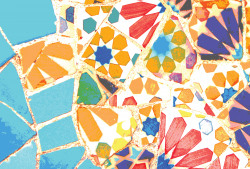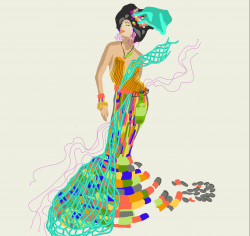The best art is nothing but the purest reflection of its creator. In the case of French artist Marcel Duchamp, the intriguing life of the creator rivals the works themselves. (https://aaronkirman.com)
Running through August 2 at the National Portrait Gallery, “Inventing Marcel Duchamp: The Dynamics of Portraiture” provides a gripping retrospective on the Dada master. The Portrait Gallery’s limbo-like state between art museum and history museum can be off-putting at times, but it proves to be a strength in its presentation of “Inventing Marcel Duchamp.” The exhibit’s masterful pairing of factual tidbits, portraits by the artist, portraits of Duchamp (by such notable followers as Picabia, Johns, and Man Ray), and museum pieces more historical than art historical makes for a well-illustrated journey through the man’s life.
One of the standard selections on display is Daniel MacMorris’s “Marcel Duchamp,” a painting of the piece’s namesake that hasn’t been exhibited in “over seven decades.” The portrait finds the artist in front of arguably his most famous piece, “Nude Descending a Staircase, No. 2,” which many cite as a major work in American art history (despite the fact that Duchamp lived in France until the 1940s).
Plastered throughout the exhibit are quotes from Duchamp explaining how “America is the country of the art of the future” and statments that “the art of Europe is finished—dead.” Appropriately, many of the portraits of Duchamp are by Americans, showing not only their reverence for the artist but also their increased prominence in the art world.
Among the finest of these American portraits is one by Jasper Johns. Johns’ portrait demonstrates a true understanding of one of Duchamp’s central ideas—the fluid nature of a work. “M.D.” is a “cover” of Duchamp’s “Self-Portrait in Profile,” done in Johns’ immediately recognizable post-abstract expressionist/proto-pop style.
Three of the finest photographic portraits of the artist come from Arnold Rosenberg, Man Ray, and Duchamp himself, who each manage to capture a distinct part of the man’s personality. Man Ray uncovers Duchamp’s whimsical and surreal nature, showing the artist covered in soap suds. Duchamp himself shows his mutable view of identity (later expanded to include gender identity) with the mirror-enhanced “Five Way Portrait of Marcel Duchamp,” while Rosenberg captures a much older Duchamp, turning the artist’s penchant for glass-use in his works back on itself.
Irish artist Brian O’Doherty takes Duchamp’s ideas and runs with them as well, crafting a handful of “conceptual” portraits in the Dada tradition. Both of his works explore the subject’s mortality while simultaneously immortalizing his legacy and influence. As Duchamp’s ideas would essentially go on to define Postmodernism, he doesn’t need O’Doherty’s help to enter the canon of 20thcentury artists and thinkers. Still, it makes a nice addition to a fantastic exhibit.




